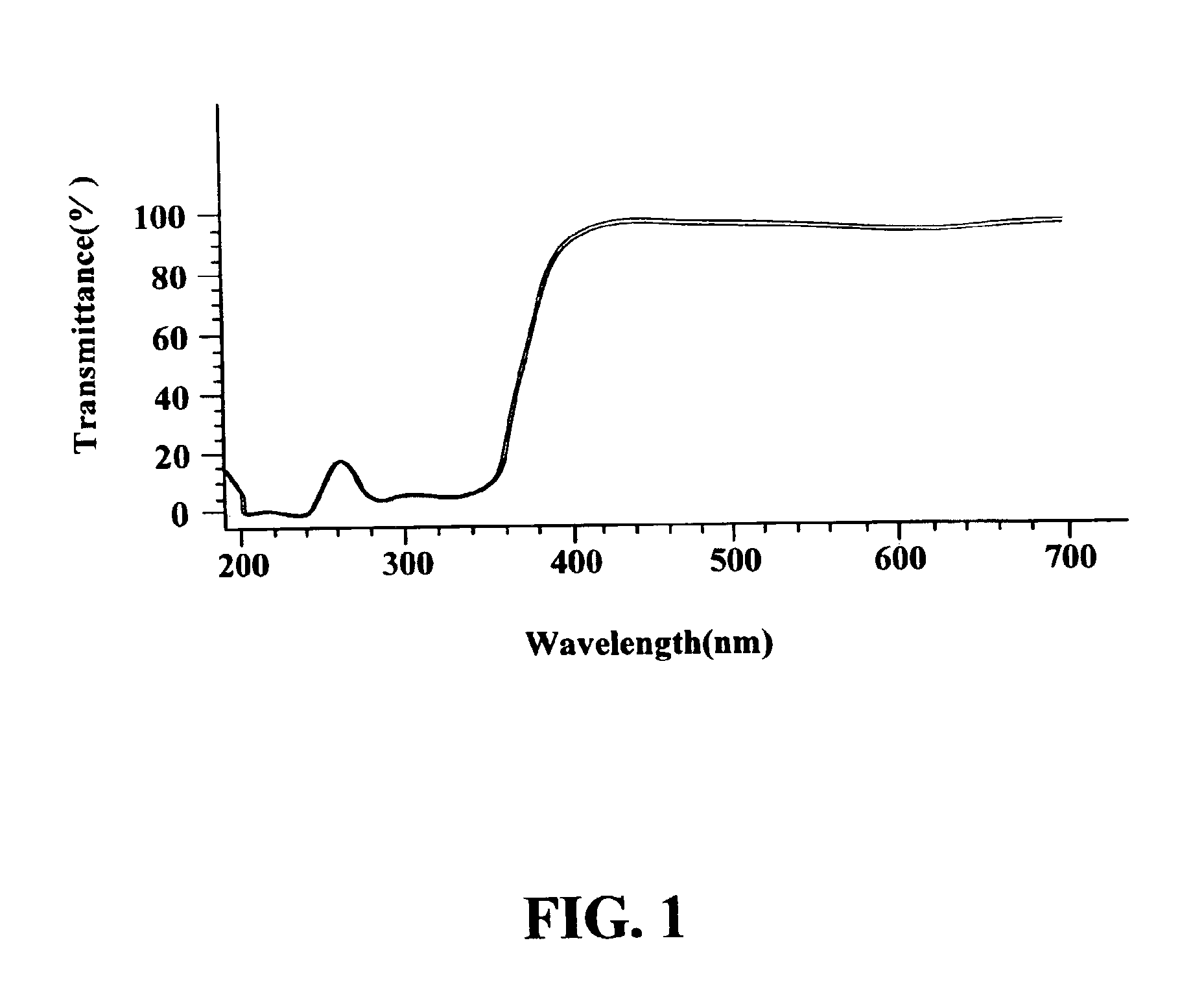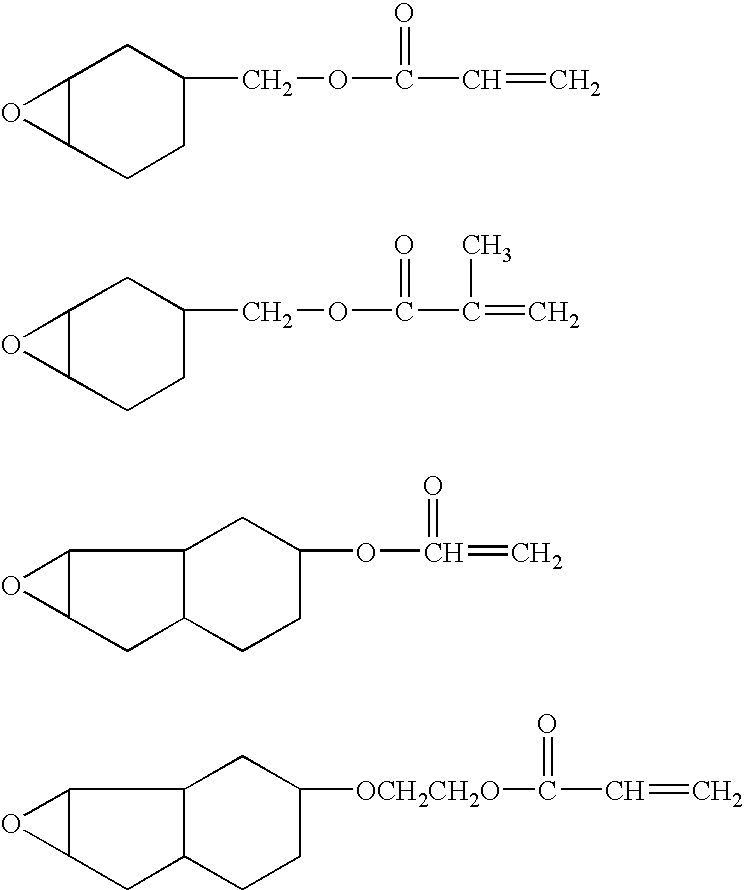Crosslinkable UV absorbing agent for UV absorbing lens
a technology of absorbing agent and uv, which is applied in the field of uv absorbing material, can solve the problems of ocular pathology, low degree of conversion, and nm may still reach the earth surfa
- Summary
- Abstract
- Description
- Claims
- Application Information
AI Technical Summary
Benefits of technology
Problems solved by technology
Method used
Image
Examples
example 1
Preparation of Crosslinkable UV Absorbing Agent
[0040]A mixture of 100 parts 2,2′,4,4′-tetrahydroxy benzophenone, 150 parts glycidyl methacrylate, 3 parts benzyl triethyl ammonium chloride, and 3 parts hydroquinone monomethyl ether is well mixed in a ball-mill (Retsch, Model: S-100), sealed under nitrogen, and heated in an oil bath at 90° C. for 8 hours. The reactants were purified with the common methods as recrystallization and vacuum distillation before the reaction. A homogeneous viscous liquid product is obtained after completion of the reaction. The results of HPLC and GPC analyses indicated that the product is a mixture of derivatives of hydroxy benzophenones with a different amount of substituted acryloxy groups, oligomers of unsaturated monoglycidyl acrylate reactant with different chain lengths, and monomers of monoglycidyl acrylate reactant but containing a negligible amount of unreacted 2,2′,4,4′-tetrahydroxy benzophenone. To test the solubility, the UV absorbing product ...
example 2
Preparation of Crosslinkable UV Absorbing Agent
[0041]A mixture of 100 parts 2,2′,4,4′-tetrahydroxy benzophenone, 200 parts glycidyl methacrylate, 3 parts benzyl triethyl ammonium chloride, and 3 parts hydroquinone monomethyl ether is well mixed, sealed under nitrogen, and heated in an oil bath at 90° C. for 8 hours. A homogeneous viscous liquid product is obtained after completion of the reaction. The results of HPLC and GPC analyses indicate that the product is also a mixture similar to UVC1 and containing a negligible amount of unreacted 2,2′,4,4′-tetrahydroxy benzophenone. This product is also soluble in HEMA and referred to as UVC 2.
example 3
Preparation of the UV Blocking Soft Contact Lenses
[0042]The basic formulation to prepare the soft contact lenses constitutes 100 parts HEMA, 32 parts N-vinyl pyrrolidone, 0.75 part 2-chlorothioxanthone, 0.075 part modified Levafix Blue E-BRA (a modified reactive tinting dye), and 75 parts glycerin. The photo initiator with a good light absorbing power within the wavelength range of 380-410 nm is preferred to avoid the interference from the added crosslinkable UV absorbing agent. The formulation was added with two different amounts (1.25 and 2.50 weight %) of as-prepared UVC agent and mixed under reduced pressure. Then the mixture is placed in the preformed polystyrene mold with a diameter of 12.66 mm, a base curve of 8.625, a central lens thickness of 110 microns, and the power of 100. Curing is performed at 60° C. under a light source consisting of 15 watt UV lamps (wavelength 300-410 nm) for 15 minutes. The total accumulated light energy during curing is 2100 mJ / cm2. After curing,...
PUM
| Property | Measurement | Unit |
|---|---|---|
| Temperature | aaaaa | aaaaa |
| Fraction | aaaaa | aaaaa |
| Fraction | aaaaa | aaaaa |
Abstract
Description
Claims
Application Information
 Login to View More
Login to View More - R&D
- Intellectual Property
- Life Sciences
- Materials
- Tech Scout
- Unparalleled Data Quality
- Higher Quality Content
- 60% Fewer Hallucinations
Browse by: Latest US Patents, China's latest patents, Technical Efficacy Thesaurus, Application Domain, Technology Topic, Popular Technical Reports.
© 2025 PatSnap. All rights reserved.Legal|Privacy policy|Modern Slavery Act Transparency Statement|Sitemap|About US| Contact US: help@patsnap.com



